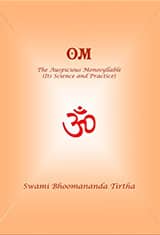Swami Nirviseshananda Tirtha
SCRIPTURES
-
Aparokshanubhuti
Ashtavakra Samhita
Bhagavad Gita
Bhaja Govindam
Brihadaranyaka Upanishad
Guru Ashtakam
Guru Gita
Katha Upanishad
Lingashtakam
Madhurashtakam
Mahabharata
Mundakopanishad
Sarva Vedanta Siddhanta Sara Sangrahah
Saundarya Lahari
Shanti Mantras
Shvetashvatara Upanishad
Srimad Bhagavatam
Subhashitam
Upadesha Panchakam
Vairagya Shatakam
Vishnusahasranama
Vivekachudamani
Yogavasishtha Ramayanam
PLAYLISTS
-
Atma Sudha (Fountain of Bliss)
Atma Sudha Verse by Verse (Fountain of Bliss)
Bhagavad Gita
Bhagavad Gita - Listen and Learn
Bhagavad Gita - Verse by Verse
Bhagavad Gita Chapter 15
Bhajans
Essential Shlokas For Memorization (Bhagavad Gita)
Evening Prayers
Inner Embrace
Inner Embrace Verse by Verse
Morning Prayers
Song of the Soul
Song of the Soul - Verse by Verse
Verses for Introspection
Vishnusahasranama
PLAYLISTS
-
Bhagavadgeeta – A Revolutionary Message
Bhagavadgeeta – Sattva-Rajas-Tamas & Their Transcendence Ch.14
Brahmavidya
Discover Spirituality
Meditation - The Purpose and the Process
Prabhata Rashmih - Austerity and Renunciation
Prabhata Rashmih - How to Lead Life towards Fulfillment
Prabhata Rashmih - Introspection, the knowledge austerity
Prabhata Rashmih - Mind - Its Mysteries and how to Spiritualize it
Prabhata Rashmih - Nurturing Good Qualities
Prabhata Rashmih - The Eternal Relevance of Scriptures
Prabhata Rashmih - The Nature of Consciousness
Prabhata Rashmih - The Practice of Sadhana
Prabhata Rashmih - The Relationship with God
Prabhata Rashmih - The Role of a Guru
Prabhata Rashmih - What is it to be spiritual and its benefits
Prabhata Rashmih - Where lies True Dharma
Prabhata Rashmih – Making Devotion Wholesome
Prabhata Rashmih – The Unique Philosophy of the Bhagavad Gita
Realise the Self - Here and Now
The Majesty of the Mind
Zenith of Devotion
TYPE
SPEAKERS
PROGRAMS
LOCATION
YEAR
CONTENTS TYPE
LANGUAGES
DURATION
Filter

Articles (13)
Swami Nirviseshananda Tirtha
Science and Spirituality
In spirituality the ‘I’ in us, the inmost Truth of our being, is finally discovered as God. So, spiritual sadhana starts when we stop looking outside and start looking within to find out “Who am I”.
Read More
Swami Nirviseshananda Tirtha
Higher Joy
How to give children a taste of a liberal mindset, a value-oriented life? Perhaps stories will help them understand the real taste of human values. Of course, thereafter they have to live the values to get established in them.
Read More
Swami Nirviseshananda Tirtha
Soothing a Troubled Mind
An enlightening, moving and heart-warming correspondence between Nutan Swamiji and a young girl, which addresses the difficulties of many intellectuals.
Read More
Swami Nirviseshananda Tirtha
Sādhana in Gurusannidhi
Through the Teacher’s responses to various situations, we get a touch of his vision – his love and his dispassion. In receiving his comments and accepting the corrections, our ego gets sublimated. In working with the co-disciples and accommodating others lovingly as the Guru does, our minds expand.
Read More
Swami Nirviseshananda Tirtha
From External God to our own Mind
The real purpose of all religious as well as spiritual practices is to purify and transform our own mind.
Read More
Swami Nirviseshananda Tirtha
Why Ochre robes?
This colour also represents earth. Earlier, Sannyasins used to dye their cloth with a special ochre coloured earth called ‘Geri-mitti’.
Read More
Swami Nirviseshananda Tirtha
Watching your thoughts
"Watching the thoughts" means witnessing them come and go without getting involved in them. Normally we are always getting involved in the current thought. When depressing or happy thoughts arise, we "become depressed or happy". Witnessing means we have to see the happy thoughts, depressing thoughts, without becoming happy or depressed.
Read More
Swami Nirviseshananda Tirtha
Qualities in Bhagavad Gita
All these qualities basically represent a Knower, call him/her sthita-dhee or bhakta or Jnānee or Gunāteeta.
Read More
Swami Nirviseshananda Tirtha
How to recognise a Guru?
A time comes in the life of a serious seeker, when he eagerly seeks the ultimate and feels the need for one path guided by one Guru. Holding on to one is important in making the divergent mind convergent.
Read More
Swami Nirviseshananda Tirtha
Importance of Knowing our Real Identity
The spiritual thinkers of India realized that the only way to sustain a civilization on the auspicious path, was to keep people anchored to their own inmost Self.
Read More
Swami Nirviseshananda Tirtha
Vairāgya
Vairāgya makes our mind free of possessiveness and selfishness. It liberates us from the fear of losing what we like and facing what we dislike, from preferential clinging and prejudicial intolerance.
Read More
Swami Nirviseshananda Tirtha
Desirelessness
We are born with an insufficiency or lack that makes us look for happiness. We are born with the delusion that something from the world will fulfil that lack, will make us happy.
Read More
Swami Nirviseshananda Tirtha
Bhagavad Gita for Personality Transformation
Right from birth, we are slave to our attraction and repulsion towards worldly objects and situations. Our mind constantly undergoes elation, depression, and agitation, depending on whether the objective situation we face is to our liking or disliking. We are fearful of losing what we like and facing what we dislike. Bhagavadgeeta wants us to transform this slavery into mastery by cultivating the “Yoga” attitude.
Read More







